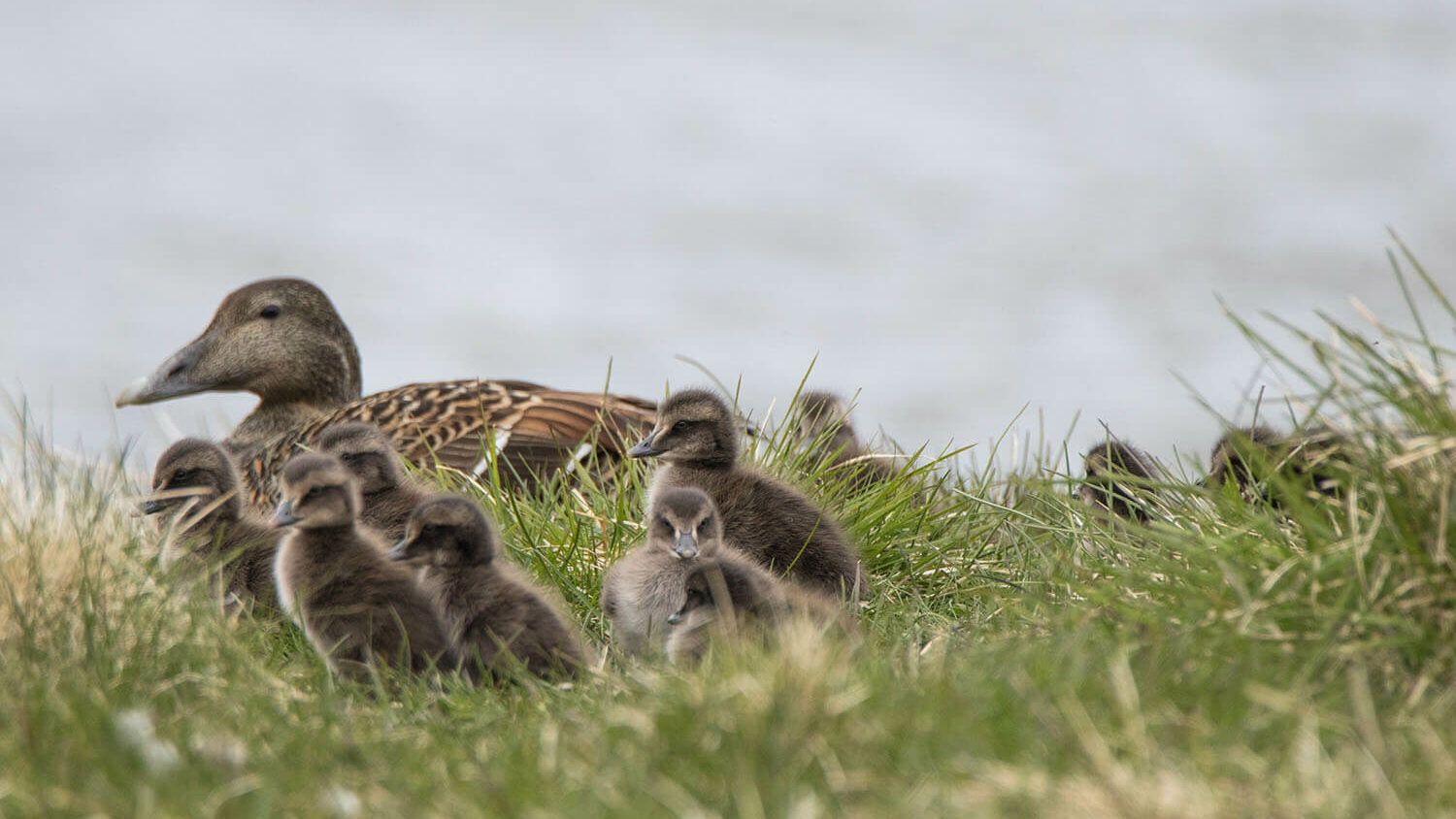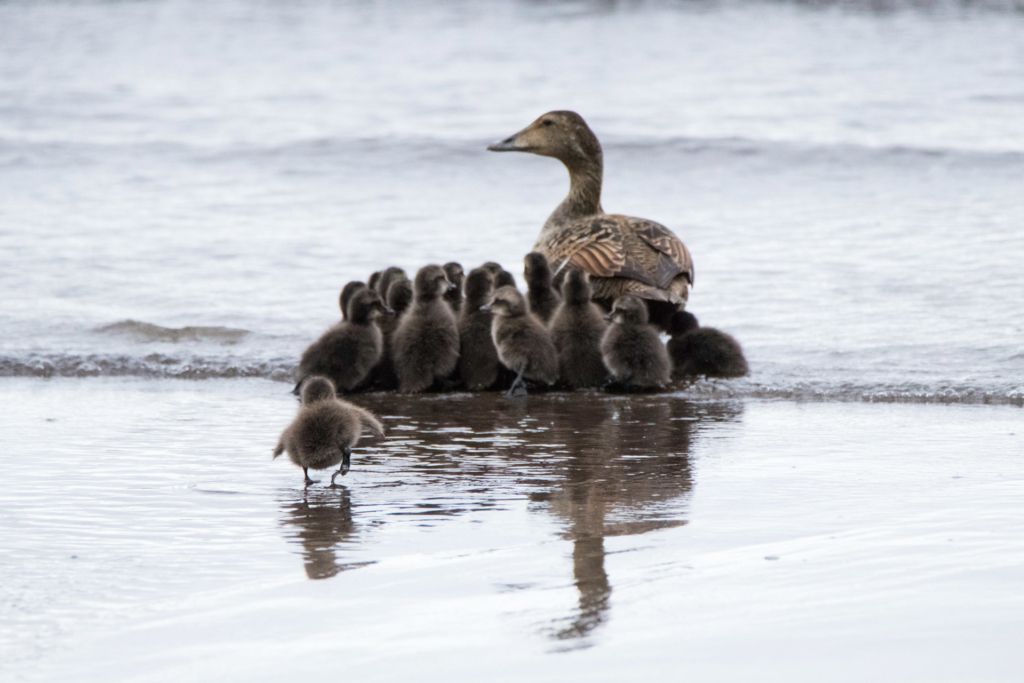Goose Down vs. Eiderdown – Which Is Best for Comforters?

We spend 8 hours a day, 2920 hours a year, 219,000 hours a lifetime in bed. Naturally, we want the very best when it comes to our sleep quality.
For the majority of us, goose down makes for the best duvet or comforter filler in terms of value. There are certainly several advantages to goose down, including:
- Fill power - Aka fluffiness. The higher the fill power, the warmer it is.
- Insulation - Goose down creates insulating pockets that trap heat.
- Durability - It’s resilient to compression and keeps its shape for years.
- Affordability - Goose down, while expensive, is still good value for money.
And regular duck down, you might be asking? While regular duck down offers superior sleep to synthetic alternatives, it has a lower fill power and down quality (duck down often has a large quantity of poorly-insulating feathers and hard, uncomfortable quills).
But this article isn’t about goose down vs duck down. It’s about goose down vs eider duck down (or eiderdown, as it’s commonly called).
Hold on, what’s eiderdown?
Eiderdown is a very particular kind of duck down. It comes from the Common Eider, a seabird that breeds in the Arctic and inhabits Iceland, Scandinavia, Canada, the United Kingdom, and Siberia.
These remarkable birds spend 10 months at sea. Here in Iceland, they return to land to lay and incubate their eggs, where they line nests with their soft, powerfully-insulating down (hence, eiderdown). In the four weeks from laying to hatching, eider ducks don’t eat, and only leave their nests to drink water. They lose a remarkable 35% of their total body weight in the process.
The eider duck’s down sees it through the brutally cold winter months at sea - and helps warm their eggs until they hatch. The down has remarkable physical properties that have made it the most coveted luxury material in the world for duvet and comforters.

Is eiderdown better than goose down?
Objectively speaking, well-sourced, high-quality eiderdown and goose down make some of the world’s finest duvets and comforters.
While we’re not 100% objective (as an eiderdown brand!), there are certain objective differences between eiderdown and goose down - especially in terms of down quality and ethical concerns - that may influence your decision.
1. Goose down can be high or low-quality (it’s usually in between!)
Not all goose down is created equal. Down from young geese (90% of goose down on the market) is usually less-insulating, and contains a high percentage of feathers (which can be uncomfortable, damage the duvet cover, and reduce the down’s resilience to compression). Down from mature (two to three-year-old) geese - often termed ‘white goose down’ - is the highest-quality. But even then, white goose down still contains 10-25% feathers.
To add to the confusion, wholesalers often mix young and mature goose down, making it difficult for consumers to determine the quality of the down inside their duvets or comforters.
Eiderdown - in particular, Icelandic eiderdown - is easier to judge. By nature, eiderdown is completely quill-less (zero feathers), which gives it uniquely superior insulating properties, make it longer-lasting (crushed feathers negatively impact a duvet’s ability to spring back to shape), and more comfortable (no hard feathers!).
At Icelandic Down, we include an authenticity certificate from the Icelandic government. This guarantees that you receive high-quality, 100% pure eiderdown.
And rather than being intensively farmed and plucked at a young age (like the majority of geese), eider ducks are wild birds left to live out their full lifespan. This allows them to develop thicker, higher-quality down over the years. Naturally, this makes for cozier, higher-quality duvets and comforters.
2. Eiderdown offers better insulation and cling
According to a 2017 study that compared the physical properties of wild goose down to eiderdown, the down from the eider duck showed significant advantages in both insulation (due to longer feather barbules) and cling (aka how well the down sticks together, keeping its original shape for longer).
This is probably because the eider duck has to thrive in cold, Arctic waters for 10 months of the year, and its’ down-lined nests need to protect eggs from frosty winds.
Whatever the evolutionary reasons, eiderdown, objectively speaking, will keep you warmer than goose down, and it’ll keep you more consistently warm long after a goose down duvet or comforter has lost its shape, cohesion, and insulating properties.
3. Ethical concerns in the waterfowl industry

As we discussed in another article, the down industry has been plagued by controversy. While a large percentage of down is a byproduct of the meat industry, the practice of live-plucking (removing down and feathers while the bird is still alive, causing it a great deal of pain and distress) is still common.
We think we’d all sleep a bit better at night with a clean conscience.
Unlike commercially-farmed waterfowl (ducks and geese), eider ducks are wild birds that voluntarily leave behind their down when they abandon their nests in Autumn and return to the Arctic sea.
In fact, here in Iceland, our farmers create special sanctuaries to attract the ducks. They provide protection from natural predators. And they painstakingly collect the down by hand. It takes 50 to 70 nests to collect 1 kg (2.2 pounds) of eiderdown.